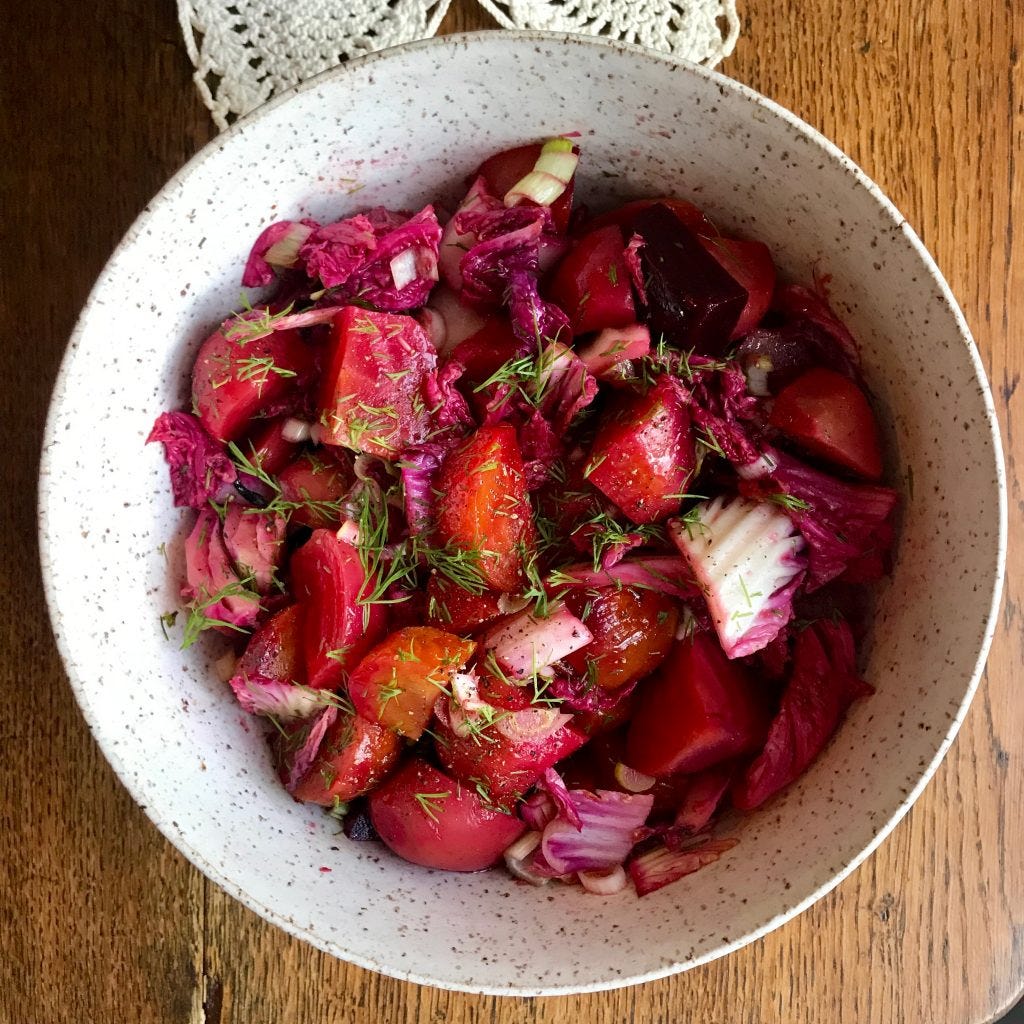A Vibrant Salad for Winter
I didn't mean to make this beet salad for Thanksgiving. And when I was looking for a place on the buffet at my parents' house, alongside the carved turkey, mashed potatoes, stuffing, and other holiday dish royalty, it wasn't entirely an accident that I sorta kinda placed it on a neighboring table where maybe nobody would see. (All the more leftovers for…





